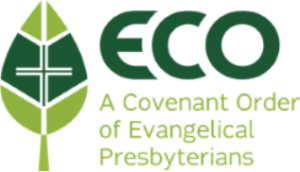These icons, whose originals date back to the late 15th/early 16th centuries, were exhibited in Moscow in 1913, for the first and last time, in commemoration of the tercentenary of the dynasty of the Romanovs. An American collector, George R Hann, next exhibited them from 1935 to 1937.
Charles and I received these icon reproductions from my godfather and mentor, Dr. Eric Claus Hulmer, curator of the George R. Hann Collection of Art in Sewickly Heights, Pennsylvania, as a wedding present years ago. George R. Hann was the president of Oliver Iron and Steel in Pittsburgh. He was also a founder of Capitol Airlines and a serious art collector. His estate was called “Tree Tops,” a baronial mansion in Sewickley Heights, Pennsylvania overlooking the Ohio River. He bought the icons from the Tretjakkov Gallery in Moscow.
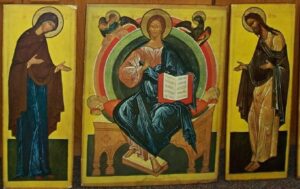
Virgin Mary and John the Baptist
These icons come from the most important row of the Iconostasis, a wall dividing the alter from the rest of the church. A “Deesis”, sometimes also called “Deisus,”is a traditional iconic representation of Christ in Majesty or Christ Pantocrator: enthroned, carrying a book, and flanked by the Virgin Mary and St. John the Baptist, and sometimes other saints and angels.
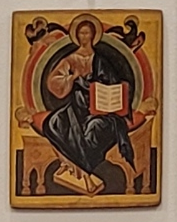
The center icon represents the Savior, both the Head of the Church and the Redeemer who sacrificed himself for man’s sins. The open Book of Gospels He holds in his left hand reads “Come unto me, all ye that labor and are heavy laden, and I will give you rest” (Matt. Xi, 28). Please note the reverse prospective used to illustrate that He is judging you. Christ is surrounded by an aurora wherein you will find the symbols of the four apostles, Matthew, the winged man; Mark, winged lion; Luke, winged bull or ox; and John, the eagle.
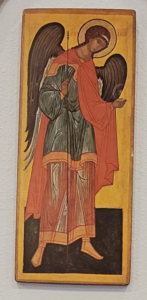
Archangel Michael
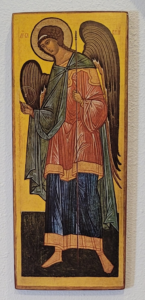
Archangel Gabriel

Apostle Peter
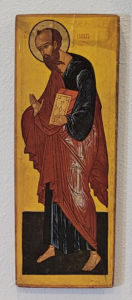
Apostle Paul
$150,000 to $170,000 each. We hope you will enjoy them as much as we have.
We are so blessed to come into possession of them.
Longtime members of FHPC, Charles W. Humes, Jr. passed away on November 1, 2016 and Marilyn relocated from Fountain Hills to Scottsdale in 2019.

Wedding Day 1965
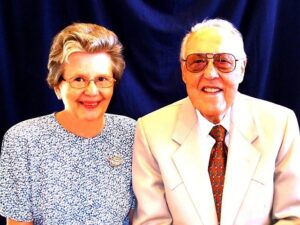
Marilyn & Charles
Pastor Bob Simmons, accompanied by Marilyn Humes, rededicated the icons in their new location in the Narthex. The gold frames were an embellishment added to the displat, designed and hand-made by Larry Cole.
According to the degree of holiness, they are added to the right and left side.
The Deesis row is made up like many others of seven icons. These show the beauty of the Novgorod iconostasis from the height of the Russian icon paintings. The slender figures bow graciously forward and harmonize in the use of colors. The balancing of the composition finds special emphasis in the carefully designed drapes of the garments

